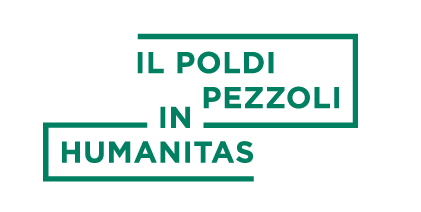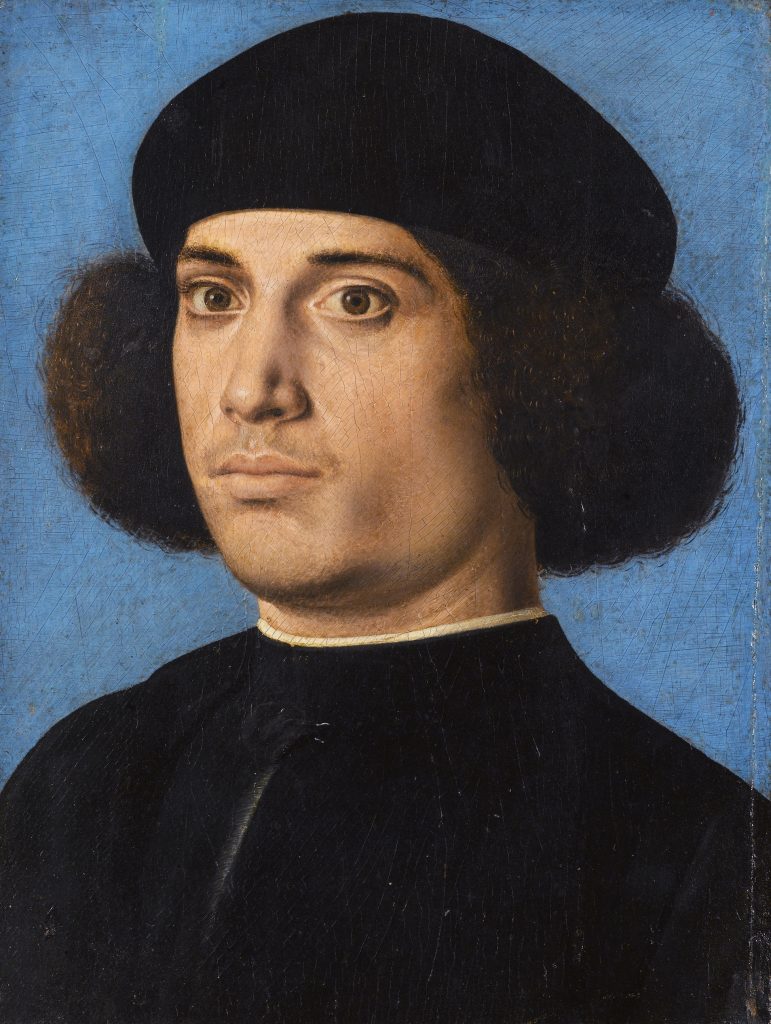
ANDREA PREVITALI
(Brembate di Sopra (Bg), 1480 circa – Bergamo, 1528)
Portrait of a Man
1502 circa
Tempera on panel
23,8×18 cm
Museo Poldi Pezzoli, Milan

ARTWORK
This small panel dates from around 1502, during the early career of Bergamo painter Andrea Previtali. At this time he was greatly influenced by his teacher, Giovanni Bellini, as the Latin signature on the back of the painting suggests: ‘Andreas Cordelle Agi Discipulus Iohannis Bellini Pinxit’. The painter was nicknamed ‘Cordeliaghi’ because his father sold cords (corde) and needles (aghi).
Although the identity of the subject is unknown, the hairstyle and hat suggest he was Venetian. The bright background and dark mass of the hair and cap contrast with the delicate shading of the face.
Painted on the other side of the panel is a skull and the Latin inscription ‘This is beauty, this is the form that remains. This law is the same for all’, pointing clearly to the transience of earthly beauty and youth, almost as a counterpoint to the intensity of the man’s gaze. The fact that the skull is painted upside-down on the reverse of the portrait suggests that the panel was originally placed on a rotatable support.
BIOGRAPHY
Andrea Previtali, known as ‘Cordeliaghi’, was born in Brembate di Sopra (BG) around 1480. His nickname derives from the fact that his father sold cords (corde) and needles (aghi). Recognising Previtali’s artistic talent, his father sent him to Giovanni Bellini’s workshop in Venice. Here the painter was trained and remained until 1511.
That year he returned to Bergamo, perhaps summoned by the Casotti Mazzoleni family, originally from Valle Imagna. The Casottis commissioned several altarpieces for various churches from him, as well as the frescoes in Villa Zogna, where those depicting arts and crafts still remain.
In 1512, the Venetian painter Lorenzo Lotto arrived in Bergamo; Previtali not only collaborated with him on a number of projects, but was also influenced by him, as paintings from this period show.
Previtali died of the plague on 7 November 1528 in his house next to the church of Sant’Andrea in Bergamo.
